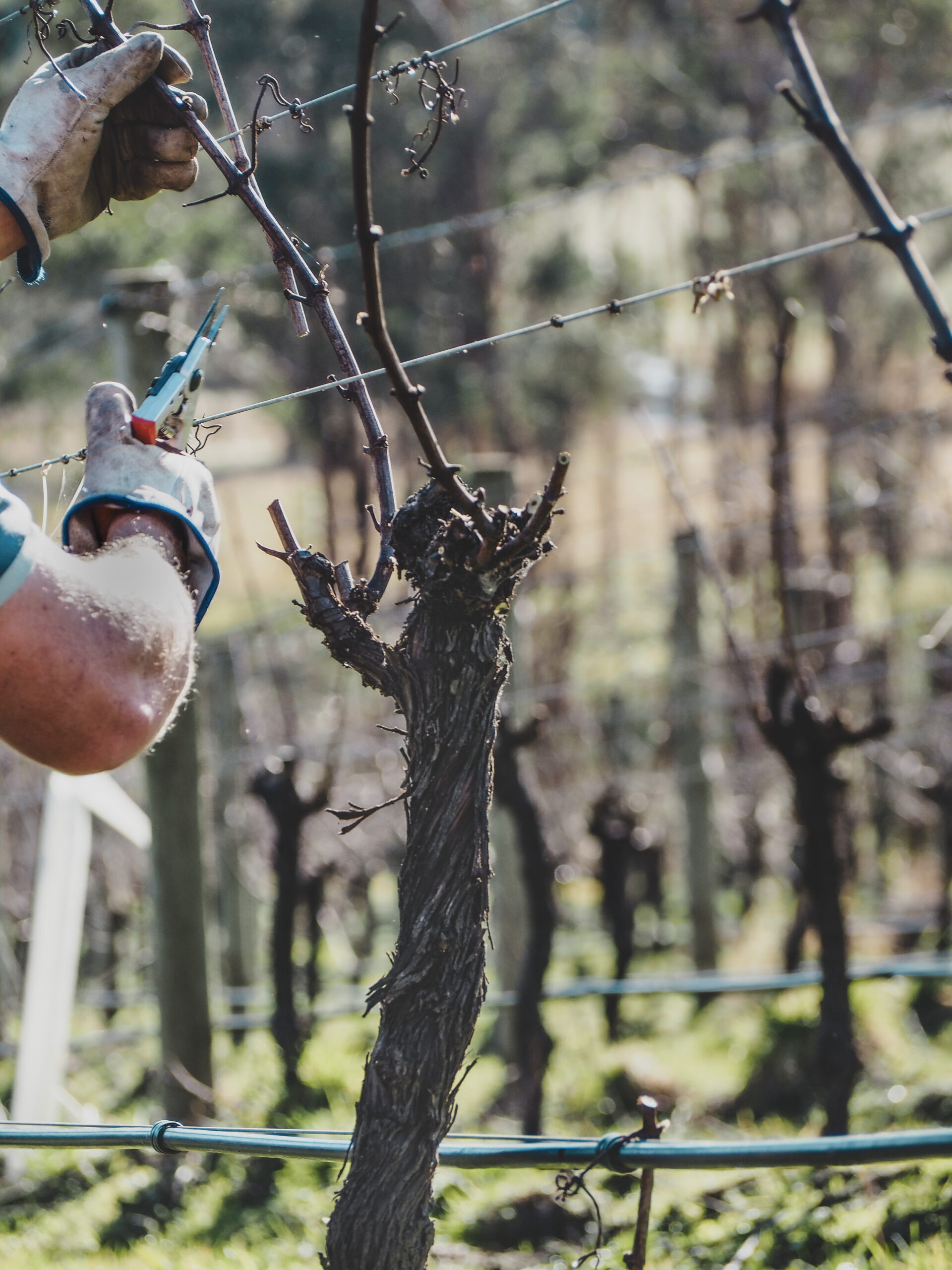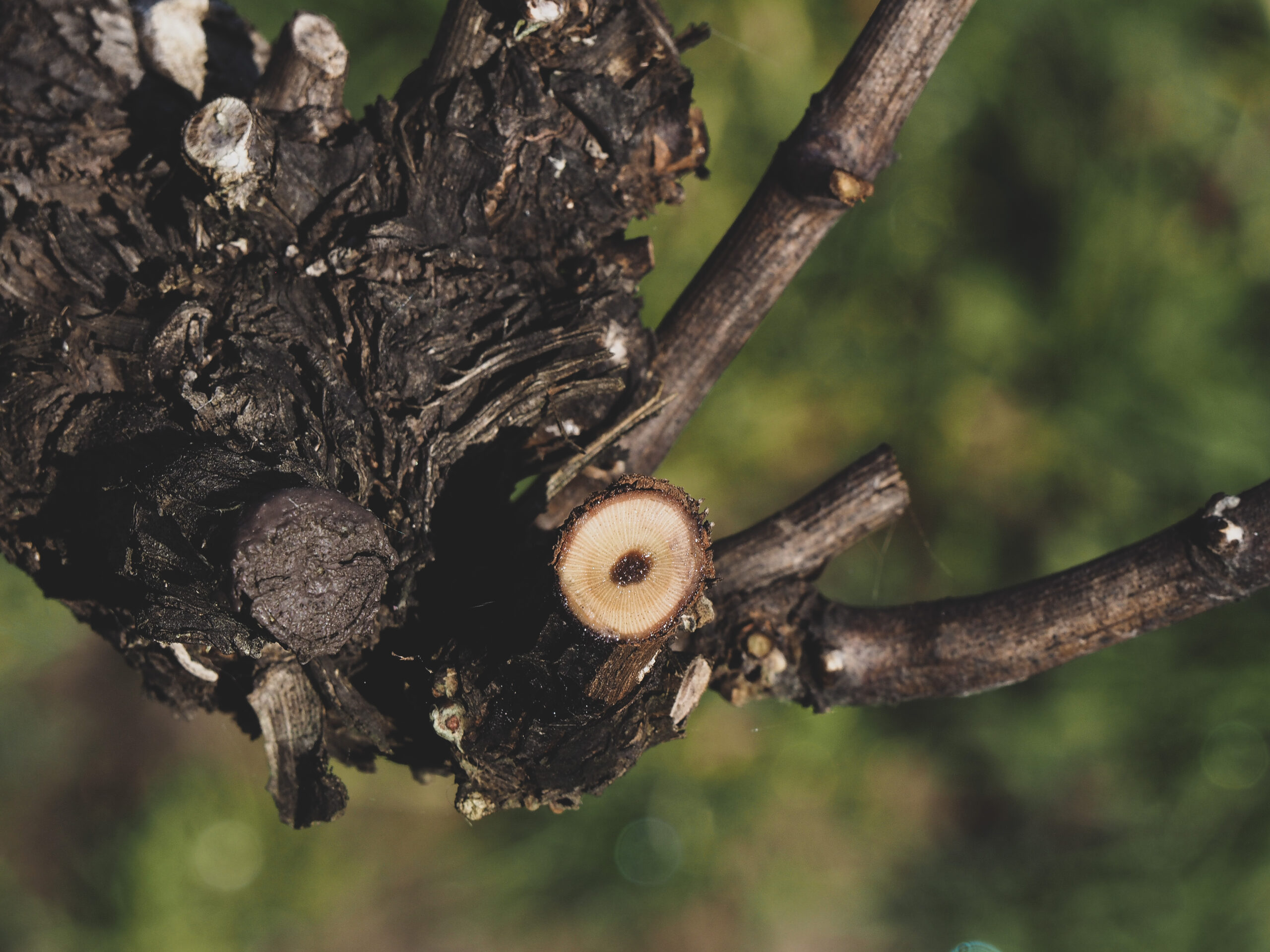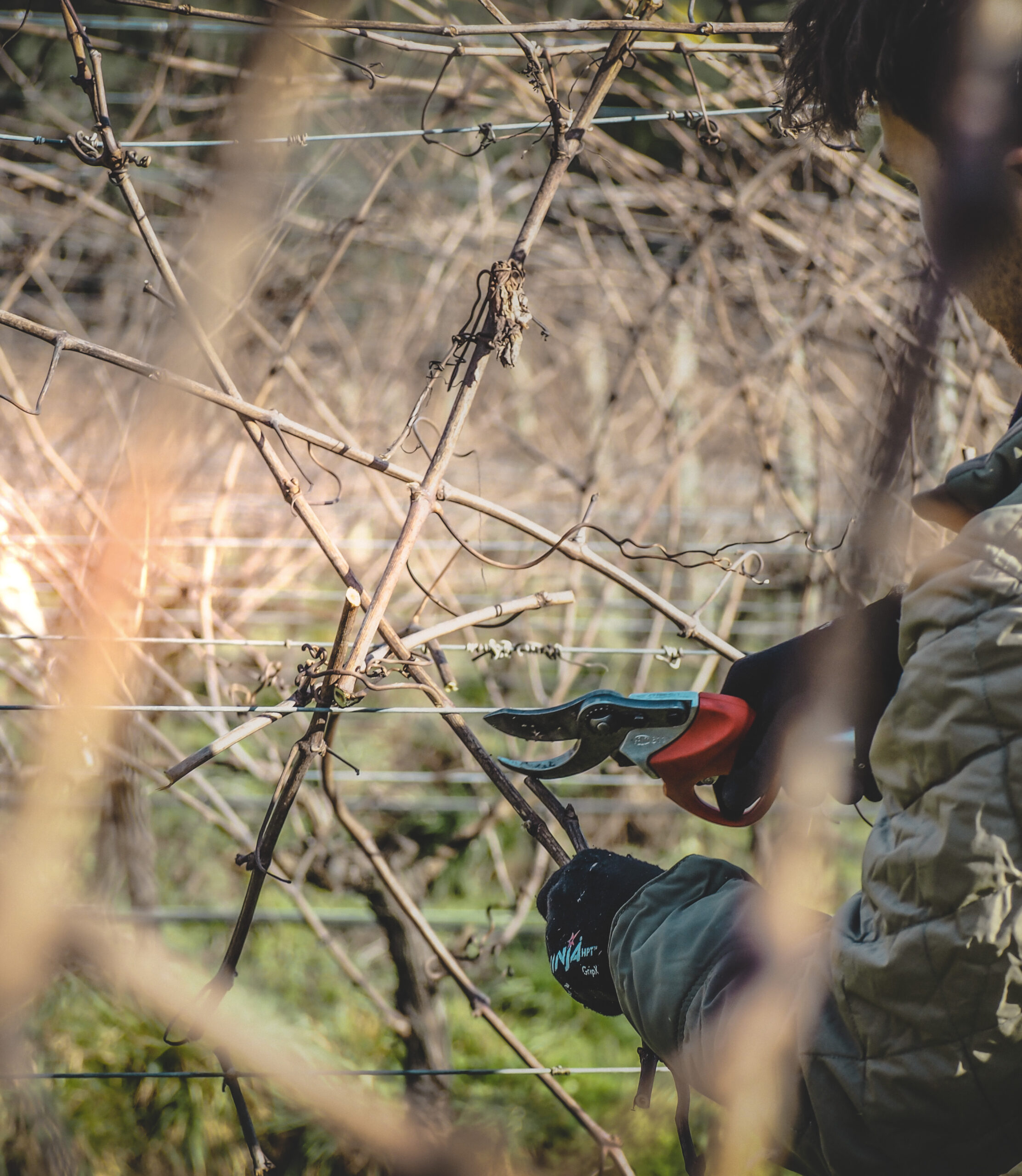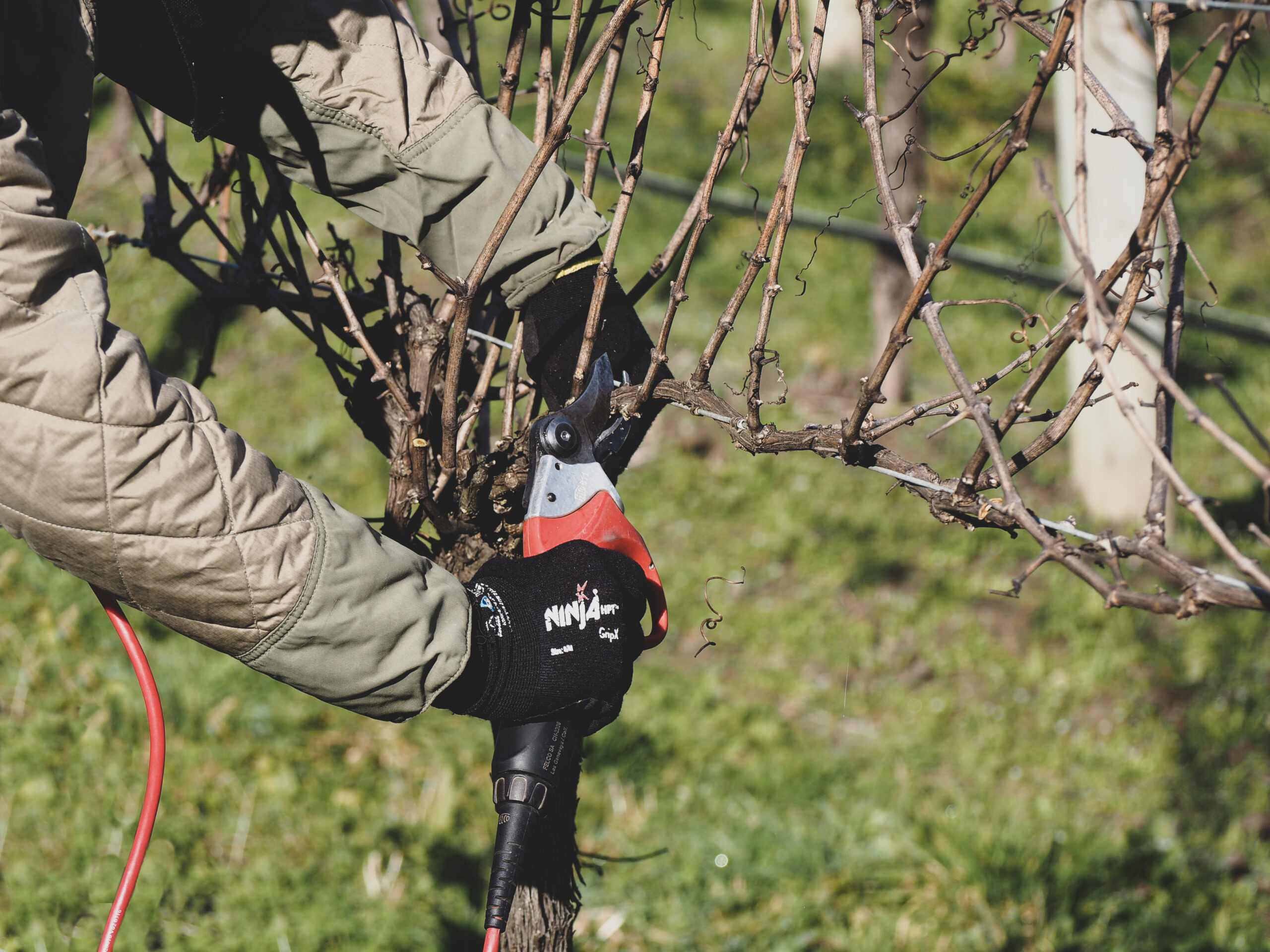Owen Littlejohns
September 2021

Ask any vineyard worker, and you’ll hear the same thing, ‘Pruning is the best time of the year’.
And I’d agree… for the first week or so.
Nevertheless, pruning is one of the most rewarding aspects of viticulture. It is a time of reflection over the past season and the season ahead.
It’s also a skill well worth learning if you get the chance.
We practice two common pruning styles across our five sites. The majority of our vines and all of our premium blocks are cane pruned. Cane pruning involves laying a new ‘one-year-old’ cane onto a permanent wire each year while removing the previous year’s cane. (There is a little bit more to it than that, but that’s the gist). At this stage, it’s important to cut the cane to the correct number of buds so that the vine can adequately support balanced growth throughout the season. The vine could become very vigorous with too few buds, and with too many buds it will lack growth and canopy, both outcomes negatively affecting the quality of the grapes produced.
For the past few years, we have been steering our pruning technique across to what is known as ‘Soft Pruning’, a technique that has been popularised in recent years by a pruning consultant group based out of Italy.
Soft Pruning essentially follows four key principles:
1 / VINE STRUCTURE
Principal one considers the natural structure of a vine and trains the vine to allow it to grow and develop such that we reflect its natural growth pattern.
2 / SAP FLOW
Principle two is about respecting the natural flow of sap through the vines’ vascular system and ensuring continuity of sap flow throughout the vine.
3 / THE CROWN & BIG CUTS
Principle three focuses on the vines crown (the top of the trunk) and how avoiding big cuts close to the crown or trunk help minimize the ‘corking effect’ inside the vines’ vascular system. This also reduces opportunities for disease to enter the vine through the cut.
4 / PROTECTIVE WOOD
Principle four takes into account that each time a cut is made, a certain amount of wood adjacent to the cut will dry back. By leaving a little extra wood, we are protecting against impingement upon the vascular system by the dried component.
The oldest vines we have are at our Woori Yallock ‘Ferguson’ property, these vines are twenty-six years old.
With love, care and soft pruning we truly hope to celebrate fifty years one day!
References:


